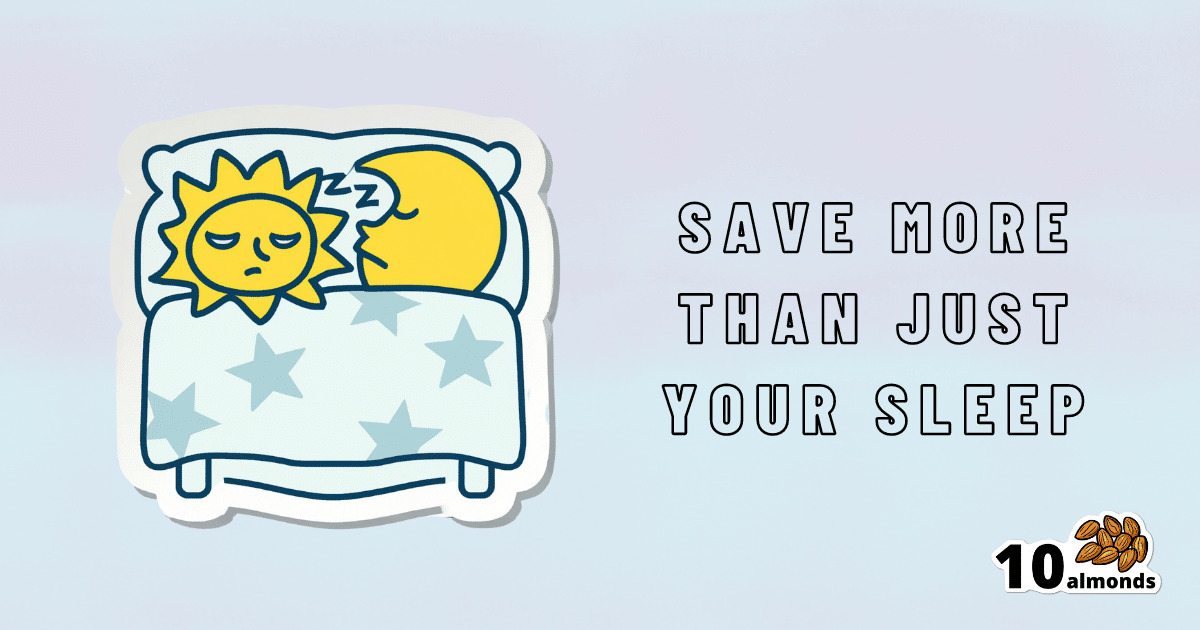Blue Light At Night? Save More Than Just Your Sleep!
Beating The Insomnia Blues: Tips for better sleep include avoiding caffeine and alcohol before bed, fresh bedding, a warm bed and cool room, and keeping the room dark.

Beating The Insomnia Blues
You previously asked us about recipes for insomnia (or rather, recipes/foods to help with easing insomnia). We delivered!
But we also semi-promised we’d cover a bit more of the general management of insomnia, because while diet’s important, it’s not everything.
Sleep Hygiene
Alright, you probably know this first bit, but we’d be remiss if we didn’t cover it before moving on:
- No caffeine or alcohol before bed
- Ideally: none earlier either, but if you enjoy one or the other or both, we realize an article about sleep hygiene isn’t going to be what changes your mind
- Fresh bedding
- At the very least, fresh pillowcase(s). While washing and drying an entire bedding set constantly may be arduous and wasteful of resources, it never hurts to throw your latest pillowcase(s) in with each load of laundry you happen to do.
- Warm bed, cool room = maximum coziness
- Dark room. Speaking of which…
About That Darkness…
When we say the room should be dark, we really mean it:
- Not dark like “evening mood lighting”, but actually dark.
- Not dark like “in the pale moonlight”, but actually dark.
- Not dark like “apart from the light peeking under the doorway”, but actually dark.
- Not dark like “apart from a few LEDs on electronic devices that are on standby or are charging”, but actually dark.
There are many studies about the impact of blue light on sleep, but here’s one as an example.
If blue light with wavelength between 415 nm and 455 nm (in the visible spectrum) hits the retina, melatonin (the sleep hormone) will be suppressed.
The extent of the suppression is proportional to the amount of blue light. This means that there is a difference between starting at an “artificial daylight” lamp, and having the blue LED of your phone charger showing… but the effect is cumulative.
And it gets worse:
❝This high energy blue light passes through the cornea and lens to the retina causing diseases such as dry eye, cataract, age-related macular degeneration, even stimulating the brain, inhibiting melatonin secretion, and enhancing adrenocortical hormone production, which will destroy the hormonal balance and directly affect sleep quality.❞
Read it in full: Research progress about the effect and prevention of blue light on eyes
See also: Age-related maculopathy and the impact of blue light hazard
So, what this means, if we value our health, is:
- Switch off, or if that’s impractical, cover the lights of electronic devices. This might be as simple as placing your phone face-down rather than face-up, for instance.
- Invest in blackout blinds/curtains (per your preference). Serious ones, like these ← see how they don’t have to be black to be blackout! You don’t have to sacrifice style for function 😎
- If you can’t reasonably do the above, consider a sleep mask. Again, a good one. Not the kind you were given on a flight, or got free with some fluffy handcuffs. We mean a full-blackout sleep mask that’s designed to be comfortable enough to sleep in, like this one.
- If you need to get up to pee or whatever, do like a pirate and keep one eye covered/closed. That way, it’ll remain unaffected by the light. Pirates did it to retain their night vision when switching between being on-deck or below, but you can do it to halve the loss of melatonin.
Lights-Out For Your Brain Too
You can have all the darkness in the world and still not sleep if your mind is racing thinking about:
- your recent day
- your next day
- that conversation you wish had gone differently
- what you really should have done when you were 18
- how you would go about fixing your country’s socio-political and economic woes if you were in charge
- Etc.
We wrote about how to hit pause on all that, in a previous edition of 10almonds.
Check it out: The Off-Button For Your Brain—How to “just say no” to your racing mind (this trick really works)
Sweet dreams!
Share This Post
Learn To Grow
Sign up for weekly gardening tips, product reviews and discounts.




